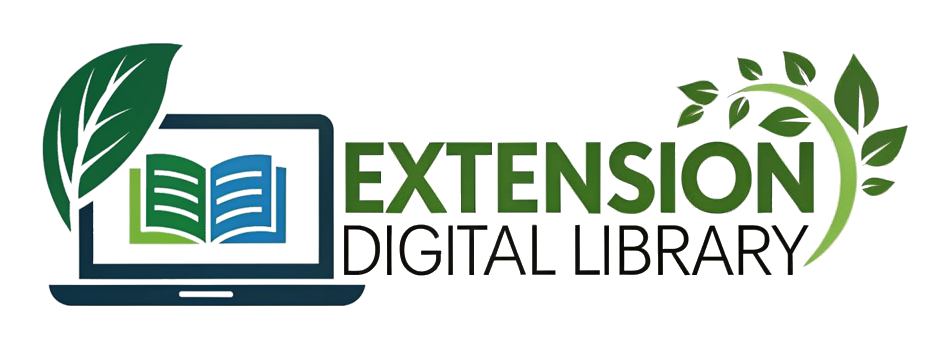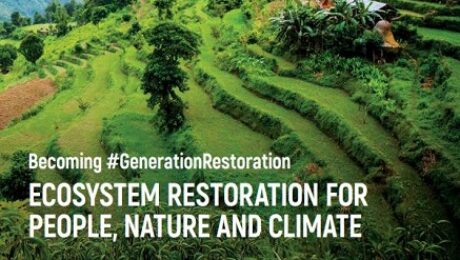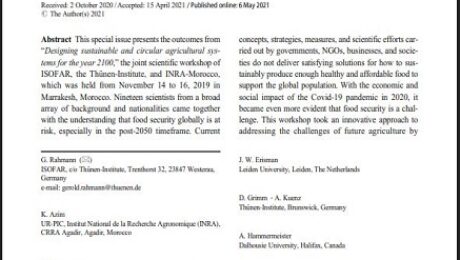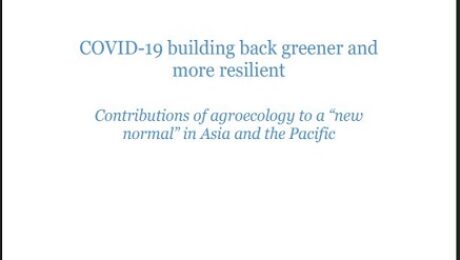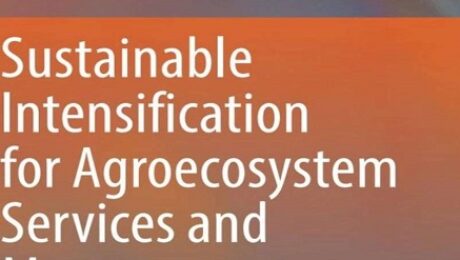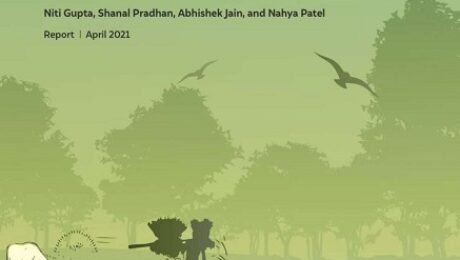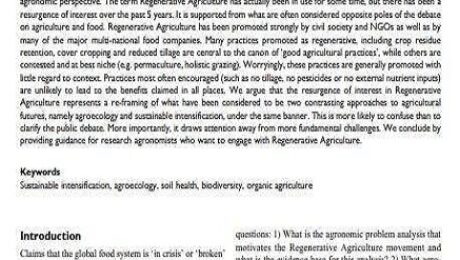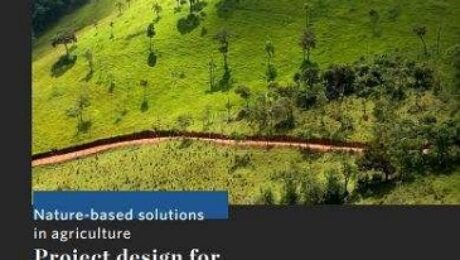Ecosystem Restoration for People, Nature and Climate
This report presents the case for why we all must throw our weight behind a global restoration effort. Drawing on the latest scientific evidence, it explains the crucial role played by ecosystems from forests and farmland to rivers and oceans, and charts the losses that result from our poor stewardship of the planet. The UN Decade on Ecosystem Restoration provides a unique opportunity to transform food, fibre and feed production systems to meet the needs of the 21st century, and to eradicate poverty, hunger and malnutrition. This we seek to achieve through effective and innovative landscapes and seascapes management that prevents and halts degradation, and restores degraded ecosystems. The restoration of forest landscapes, farming, livestock and fish-producing ecosystems should primarily contribute to restoring them to a healthy and stable state, so that they are able to provide ecosystems services and support human needs for sustainable production and livelihoods.
- Published in AGROECOLOGY
Innovative, sustainable, and circular agricultural systems for the future
This special issue presents the outcomes from “Designing sustainable and circular agricultural systems for the year 2100,” the joint scientific workshop of ISOFAR, the Thünen-Institute, and INRA-Morocco, which was held from November 14 to 16, 2019 in Marrakesh, Morocco. Nineteen scientists from a broad array of background and nationalities came together with the understanding that food security globally is at risk, especially in the post-2050 timeframe. Current concepts, strategies, measures, and scientific efforts carried out by governments, NGOs, businesses, and societies do not deliver satisfying solutions for how to sustainably produce enough healthy and affordable food to support the global population. With the economic and social impact of the Covid-19 pandemic in 2020, it became even more evident that food security is a challenge. This workshop took an innovative approach to addressing the challenges of future agriculture by considering sustainable, circular agricultural systems. Participants presented research results on algae-based food, edible insects, mushrooms, novel concepts for nutrient management, bioreactor-based farming, sustainable food culture, as well as sensor- and remote-controlled automatic food production. This special issue presents the papers contributed to the workshop and the results of the discussions.
- Published in AGROECOLOGY
COVID-19 building back greener and more resilient
This paper is a contribution to the regional dialogue on how to respond to the COVID-19 crisis. It first highlights some of the impacts of the pandemic on agriculture and food security in the AsiaPacific Region. Then, mobilizing the framework of FAO’s ten elements of agroecology, it provides selected examples of how agroecological approaches can contribute to transforming food systems and to developing a greener, more resilient and more inclusive “new normal”.
- Published in AGROECOLOGY
Sustainable Intensification for Agroecosystem Services and Management
Provides case studies addressing sustainability in agroecosystem management; Explores innovative technologies and scientific development in the field of agriculture for maintaining the sustainable production; Address the key policy issues related to agroecosystem and sustainability intensification aspects.
This edited book provides a comprehensive account of the sustainable intensification process through various forms of case studies and scientific approaches studied across the globe. It also focuses on the agroecosystem services and their subsequent management for ecological integrity. The book helps to understand the interconnection of food, nutrition, economic growth, and environmental security on the planet. It provides comprehensive information with photographic illustration and various other forms of scientific databases on sustainable intensification of agroecosystems. The book also supports decision-making, strategies, and policy formulation for effective implementation of sustainable intensification towards higher productivity along with maintenance and management of agroecosystem services.
- Published in AGROECOLOGY
Sparing or sharing land? Views from agricultural scientists
Increased agricultural production through both intensification and extensification is a major driver of the current biodiversity crisis. As a response, two contrasting approaches have been advocated: ‘land sparing’, which minimizes demand for farmland by increasing yield, and ‘land sharing’, which boosts densities of wild populations on farmland but decreases agricultural yields. While these approaches have been useful in drawing attention to the impact of meeting the growing global demand for agricultural products on biodiversity, they have been driven mainly by conservation ecologists, and have often overlooked important issues related to farming. As agricultural scientists with practical experience in developing, testing and scaling alternative forms of agriculture in some of the most biodiversity-rich areas of Latin America, Eastern and Southern Africa and South Asia, we are pointing in this paper at what we see as being two major limitations of the land sparing/sharing framework: (1) the reliance on yield-density relationships that focus on trade-offs and overlook synergies between agriculture and biodiversity, and (2) the overemphasis on crop yield, neglecting other metrics of agricultural performance which may be more important to local farmers, and more strongly associated with positive biodiversity outcomes. It is our hope that this paper will stimulate other agricultural scientists to contribute to the land sparing/sharing framework, in order to develop together with conservation ecologists viable solutions for both improved agricultural production and biodiversity conservation.
- Published in AGROECOLOGY
The World of Organic Agriculture
The 21st edition of The World of Organic Agriculture, published by the Research Institute of Organic Agriculture (FiBL) and IFOAM – Organics International, provides a comprehensive review of recent developments in global organic agriculture. It includes contributions from representatives of the organic sector around the world and presents detailed organic farming statistics that cover the area under organic management, specific information about land use in organic systems, the number of farms and other operator types, and selected market data.
The book also contains information about the global market for organic food, information on standards and regulations, organic policy, and insights into current and emerging trends in organic agriculture in Africa, Asia, Europe, the Mediterranean, Latin America and the Caribbean, North America, and Oceania.
- Published in AGROECOLOGY
Valuing Biodiversity The economic case for biodiversity conservation in the Maldives
The Maldives’ unique environment is the bedrock of our economy. Fisheries and tourism, our two largest industries, are heavily dependent on a healthy and diverse marine ecosystem. Together, these two industries provide three quarters of our jobs, 90% of our GDP and two thirds of our foreign exchange earnings. Moreover, healthy coral reefs help protect our islands from natural disasters and guard against the adverse affects of climate change.
- Published in AGROECOLOGY
CEEW FOLU Sustainable Agriculture in India 2021
Sustainable agriculture, agroecology, regenerative agriculture, organic farming, natural farming are some of the most common terms used to describe various sustainable agriculture approaches. One might ask why so many different terminologies refer to these respective but related concepts. Perhaps it is not essential to bother about the various terms as long as we know what we mean conceptually. However, in the absence of universally accepted definitions of each of these terms, everyone has their interpretation of them. It also means that two different individuals may interpret or even apply the underlying philosophy or concept differently while using the same term.
- Published in AGROECOLOGY
Regenerative Agriculture: An agronomic perspective
Agriculture is in crisis. Soil health is collapsing. Biodiversity faces the sixth mass extinction. Crop yields are plateauing. Against this crisis narrative swells a clarion call for Regenerative Agriculture. But what is Regenerative Agriculture, and why is it gaining such prominence? Which problems does it solve, and how? Here we address these questions from an agronomic perspective. The term Regenerative Agriculture has actually been in use for some time, but there has been a resurgence of interest over the past 5 years. It is supported from what are often considered opposite poles of the debate on agriculture and food. Regenerative Agriculture has been promoted strongly by civil society and NGOs as well as by many of the major multi-national food companies. Many practices promoted as regenerative, including crop residue retention, cover cropping and reduced tillage are central to the canon of ‘good agricultural practices’, while others are contested and at best niche (e.g. permaculture, holistic grazing). Worryingly, these practices are generally promoted with little regard to context. Practices most often encouraged (such as no tillage, no pesticides or no external nutrient inputs) are unlikely to lead to the benefits claimed in all places. We argue that the resurgence of interest in Regenerative Agriculture represents a re-framing of what have been considered to be two contrasting approaches to agricultural futures, namely agroecology and sustainable intensification, under the same banner. This is more likely to confuse than to clarify the public debate. More importantly, it draws attention away from more fundamental challenges. We conclude by providing guidance for research agronomists who want to engage with Regenerative Agriculture.
- Published in AGROECOLOGY
Nature-based solutions in agriculture: Project design for securing investment
the global food system drives a ten trillion-dollar economy that connects 7.5 billion consumers and a diverse array of more than 1 billion food producers (farmers, ranchers, pastoralists, and fish harvesters). Approximately one-half of the world’s habitable lands are used for agriculture (Ritchie, 2019). Not surprisingly, the food production system has a massive impact on our planet. As we look to the future, global food demand is set to increase 50%, including a 70% increase in protein demand by 2050 (OECD and FAO, 2018). Any solution to our challenges around climate, conservation and human well-being will need to involve a transition in the way we produce food and fiber. Agriculture can begin to use Nature-based Solutions (NbS) to reduce environmental impacts and, in some cases, enhance agricultural productivity. But in order to realize the full potential of Ag NbS to have a positive impact on these problems, we need new ways to fund them that are commensurate with the scale of the opportunities.
- Published in AGROECOLOGY, GUIDE/TOOLS/MANUALS
